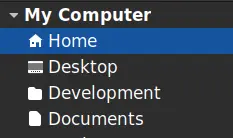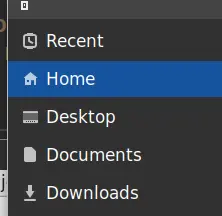There’s a particular high level folder that I use a lot across many applications. I’d like it to behave similarly to Documents/Music/etc. in that it is visible in various applications when I go to browsing. I’m able to add my folder to the file viewer either drag/drop into the panel or through favorites but when I do things like try and open a new vault in Obsidian it only shows me the default folders. Is there a way to add a custom folder so everything can view it in the same way as Docs/Music/etc?
Edit forgot to add: I’m using Pop_OS! with Cinnamon DE
I’ve not tried to add a new directory before, but it sounds like an interesting problem.
I’d start here: https://wiki.archlinux.org/title/XDG_user_directories
This does seem like it’s on the right track. It may be program-specific how those values get used though? So I think the next step is to figure out the common way those values get used by programs and how hard coded they might be
Yes, the program probably should iterate through the list in the file, but they may be hardcoded. Good opportunity to file a feature request for them.
Sounds like what you’re looking for is to set up one or more symbolic links…
https://linuxize.com/post/how-to-create-symbolic-links-in-linux-using-the-ln-command/
These sound more like shortcuts, are they able to add special folders to a sidebar though? So like in the file viewer I can have a shortcut to my Development folder by just drag/dropping it into place:

But after doing that if I try and open a file in say Kate then the popup looks like this:

I’d like for the folder to be visible as if it were a special folder like Documents and always show up in the side bar for all applications (bonus points if I can give it a custom icon too)
Now that’s an interesting question. I’m not familiar with Obsidian, but that could be something that’s unfortunately hard-coded into their GUI.
Symbolic links in Linux are meant to function more or less exactly like the full original link to the file/folder in question, but that doesn’t mean every GUI is designed the same.
No idea if it’s even something that can be readily done as you’re wanting in Obsidian, but you could try digging into their source code to try sorting that out for yourself, or perhaps contact their developers…

